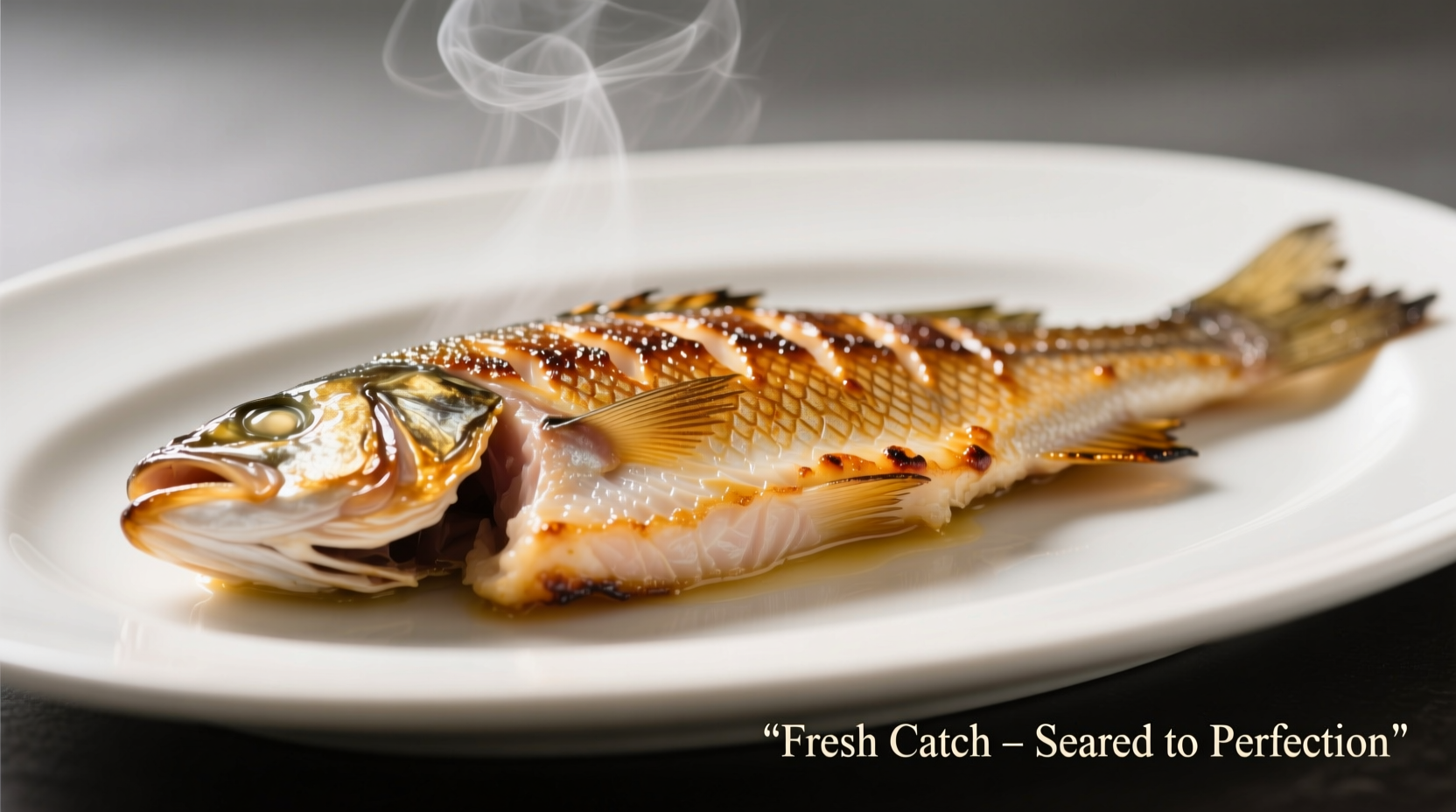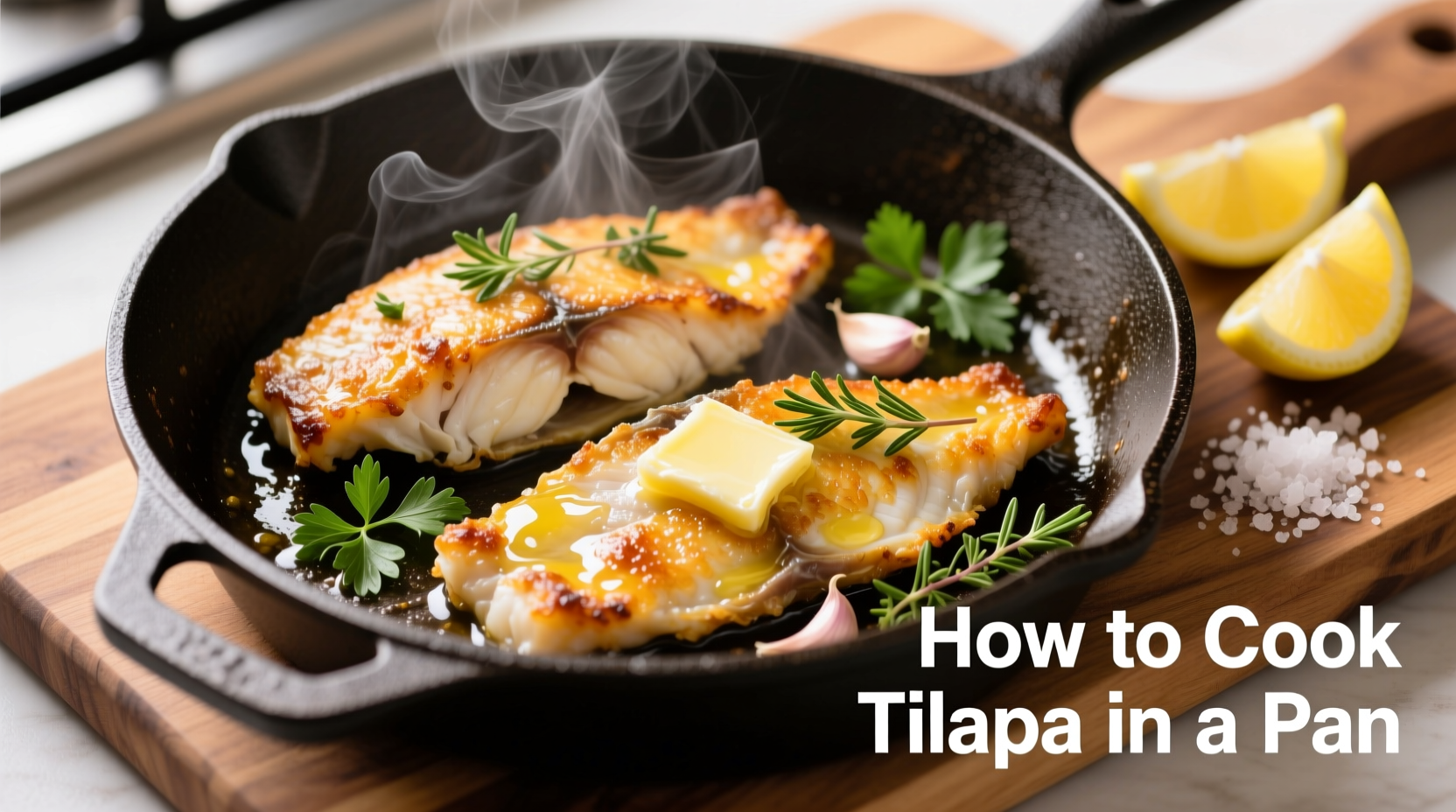Why Pan-Seared Tilapia Delivers Restaurant-Quality Results at Home
Pan-searing remains the most efficient method for cooking tilapia fillets because it creates a flavorful crust while preserving the delicate, mild flavor of this popular white fish. Unlike baking or grilling, the direct heat contact in a pan gives you precise control over texture development. According to the FDA Food Code, fish should reach an internal temperature of 145°F (63°C) for safe consumption, which pan-searing achieves consistently when following proper technique.
Essential Tools and Ingredients Checklist
Before starting, gather these kitchen essentials:
| Equipment | Ingredients (for 2 servings) |
|---|---|
| Heavy-bottomed skillet (cast iron or stainless steel) | 2 tilapia fillets (6-8 oz each), thawed if frozen |
| Instant-read thermometer | 1 tbsp olive oil or avocado oil |
| Fish spatula with thin edge | 1 tsp paprika (smoked or regular) |
| Paper towels | 1/2 tsp garlic powder |
| Tongs | 1/4 tsp black pepper |
| 1/4 tsp salt |
Professional chefs consistently recommend using cast iron or stainless steel pans rather than non-stick for superior browning. The USDA notes that tilapia provides 21g of high-quality protein per 3-ounce serving while remaining low in saturated fat, making it an excellent choice for healthy weeknight meals.

Step-by-Step Cooking Process: From Pan to Plate
Preparation: The Critical First 5 Minutes
Dry your tilapia fillets thoroughly with paper towels—this step cannot be skipped. Moisture prevents proper browning and causes sticking. Season both sides evenly with salt, pepper, paprika, and garlic powder. Let the seasoned fish sit at room temperature for 5-10 minutes while you prepare your pan. This temperature adjustment prevents cooking shock that can make fish tough.
Pan Technique: Heat Control is Everything
Place your empty skillet over medium-high heat for 2-3 minutes until properly preheated. Add oil and wait until it shimmers but doesn't smoke (approximately 350°F). To test readiness, flick a few drops of water into the pan—if they dance and evaporate immediately, you've reached the ideal temperature. This precise heat level creates the Maillard reaction for that perfect golden crust without overcooking the delicate fish.
Cooking Timeline: Timing by Thickness
Carefully place fillets in the hot pan, presentation side down. Cook undisturbed for 3-4 minutes until the edges turn opaque and the bottom develops a golden crust. Gently lift a corner with your spatula to check browning—resist the urge to move the fish prematurely. Flip using a fish spatula and cook for an additional 2-3 minutes. The FDA recommends checking internal temperature at the thickest part; tilapia is done at 145°F with flakes that separate easily.
| Fillet Thickness | First Side Cooking Time | Second Side Cooking Time |
|---|---|---|
| 1/2 inch | 3 minutes | 2 minutes |
| 3/4 inch | 3.5 minutes | 2.5 minutes |
| 1 inch | 4 minutes | 3 minutes |
Avoiding Common Tilapia Cooking Mistakes
Even experienced home cooks encounter these pitfalls when pan-cooking tilapia:
Fish Sticking to the Pan
This happens when the pan isn't hot enough before adding fish or when flipping too soon. Professional kitchens follow the "golden rule": if the fish doesn't release easily from the pan, it needs more cooking time on that side. Forcibly flipping causes tearing and uneven cooking.
Overcooking and Dryness
Tilapia's lean texture makes it prone to drying out. Remove fish from the pan when it reaches 140°F—it will continue cooking from residual heat to the safe 145°F. The American Heart Association recommends eating fish at least twice weekly for heart health, but only when properly prepared to maintain nutritional benefits.
Serving Suggestions for Complete Meal Success
Rest cooked tilapia for 2-3 minutes before serving. This allows juices to redistribute, preventing dryness. Excellent pairing options include:
- Lemon-dill sauce (Greek yogurt, fresh dill, lemon zest, garlic)
- Cilantro-lime rice with black beans
- Roasted asparagus or green beans
- Mango-avocado salsa for tropical flavor contrast
Storage and Reheating Guidelines
Store leftovers in an airtight container in the refrigerator for up to two days. For best results when reheating, place fish on a baking sheet lined with parchment paper and warm in a 275°F oven for 8-10 minutes. Avoid microwaving, which makes fish rubbery. According to food safety experts at Clemson University Cooperative Extension, properly stored cooked fish maintains quality for 3-4 days when refrigerated promptly after cooking.











 浙公网安备
33010002000092号
浙公网安备
33010002000092号 浙B2-20120091-4
浙B2-20120091-4